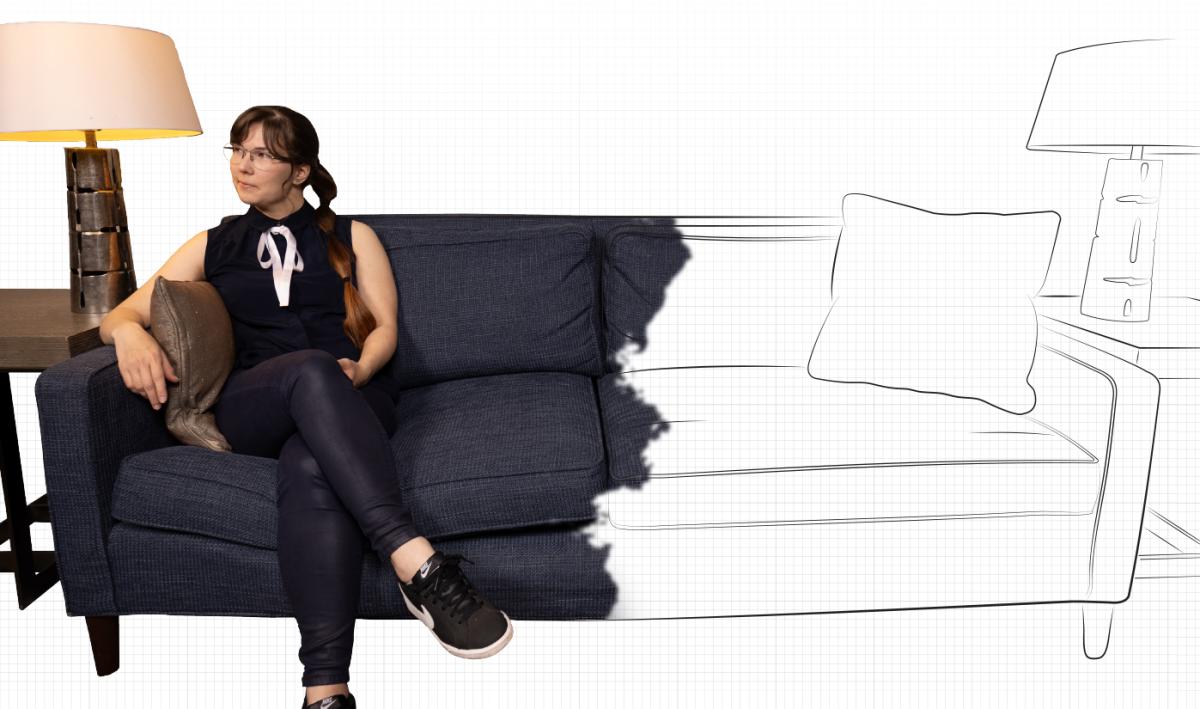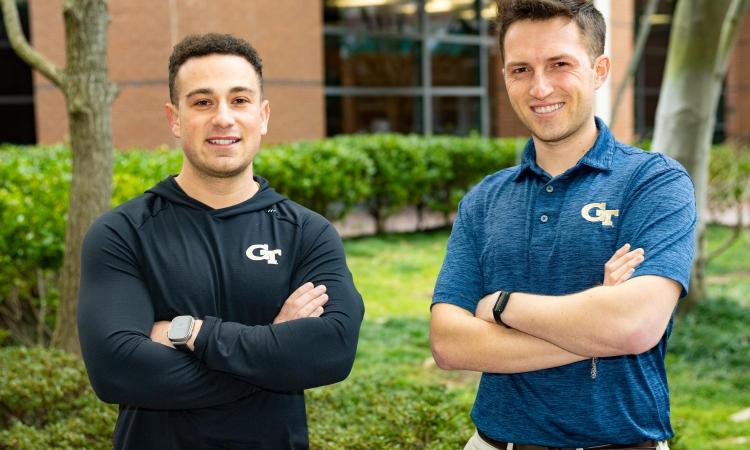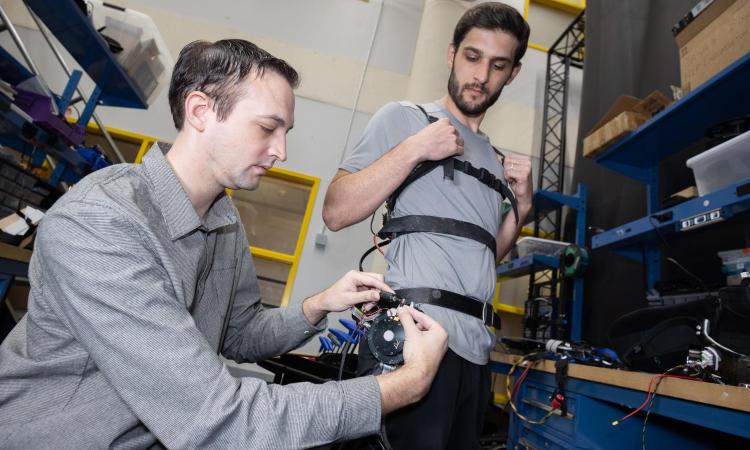Jane Ivanova came to Tech to build her technical skills. She left with the entrepreneurial tools to build a startup she hopes will simplify interior design.
(text and background only visible when logged in)
Some clients come to interior designers knowing exactly what they’re looking for in a redesigned space. Often, though, figuring out what people are searching for, and what they like and don’t like, involves plenty of trial and error. And it requires the designer to try to match the client’s words with the vision they have in mind — even when they lack the right words to describe it.
Jane Ivanova is building a platform with artificial intelligence to bridge that semantic gap, quickly finding furniture pieces to match the customer’s vision and guide the designer in creating the perfect space.
She said she’s creating a kind of “magician for furniture,” so she’s calling it Furnichanter — a portmanteau of furniture and enchanter. The platform is the result of conversations Ivanova had with designers and architects as she was exploring a different product idea.
“The problem all of them were talking about was being unable to capture the customer’s problem, what they’re actually looking for, because they don’t know how to describe it. They’re not designers,” said Ivanova, who finished her master’s in electrical and computer engineering in 2023 and is working at another startup while she refines her own.
In fact, even when clients can clearly articulate their ideas, keeping all of the details straight can be a heavy load, designers told her. Her tool helps automate all of that, using verbal descriptions, keywords, and sample images to quickly offer ideas for furniture.
The prototype version of Furnichanter takes the words and images and produces a list of potential pieces — perhaps sectional sofas ideal for watching TV or high-back chairs perfect for a reading nook. Results include links directly to furniture stores where the items are available. Together, customers and the design team can use them to refine the look they want or source the piece.
This is what the designers are doing on a daily basis, and we just want to help them with some initial suggestions. People sometimes use the same words, but they have different things in mind. So having something like a common language will be much easier to start with.
JANE IVANOVA
The tool doesn’t replace the designer’s expertise; rather, it provides a common foundation and language to start the conversation between client and designer. And it does so quickly.
“This is what the designers are doing on a daily basis, and we just want to help them with some initial suggestions,” Ivanova said. “You know, people sometimes use the same words, but they have different things in mind. So having something like a common language will be much easier to start with.”
Eventually, the goal is to build out Furnichanter so designers can put potential pieces of furniture right into a photo of the existing room to help clients visualize how everything would come together.
Along the way, Ivanova has gotten help from Georgia Tech’s Data Science Club, which she was a member of herself while she studied for her master’s degree. A team of about 15 members has worked with her to investigate natural language processing models that can be tailored to her purposes. They continue to help her retrain those models with a deeper and more specific database of terms related to furniture.
Harnessing AI for interior design isn’t exactly the entrepreneurial endeavor Ivanova expected to pursue when she first came to Georgia Tech.
Long interested in electronics, Ivanova was soldering components of a small robot when she realized she really needed a third arm to accomplish her task. That’s when inspiration struck: Could she create an assistive robotic arm that could help people in similar situations? She imagined industrial designers, architects, and others who do lots of prototyping or model-building might also benefit from such a device.

Jane Ivanova
Once she arrived at Georgia Tech, Ivanova set to work figuring out if her idea was viable. She enrolled in the Technology Entrepreneurship course in the School of Electrical and Computer Engineering and then the CREATE-X Startup Launch program. She spent time listening to designers and other professionals talk about their needs, and the gap understanding customers quickly became clear.
“The worst idea for a startup is to build something that you like, rather than trying to solve someone else’s problem,” Ivanova said. “So, it was necessary to pivot to something more relative to what customers are actually struggling with.”
And that’s what she did. At the moment, Ivanova is solidifying the prototype Furnichanter models so she can pitch the platform to potential early investors — she’s aiming for this summer. It’s been a slower process than she’d hoped, as she balances her development efforts with a full-time job at another startup in the Atlanta area focused on robotics for construction.
She also hasn’t given up on her own robotic arm idea. But the mentoring and guidance she received in CREATE-X and the entrepreneurship course she took showed her the challenges — and years of development work needed — in creating new hardware devices. It’s a truth she’s seen in her day job too, where the company has existed for several years and is just now making inroads with potential customers.
“CREATE-X really helped put my mind in the right place about what I actually was going to need to do the startup,” Ivanova said, “and how you actually approach and do the successful thing.”
(text and background only visible when logged in)
(text and background only visible when logged in)
Related Stories

AI Beyond Campus
Corporate leaders with ties to the College describe AI in their current roles, what will happen in the next five years, and how students and professionals will need to adapt.
(text and background only visible when logged in)

Managing the Ups and Downs
With GlucoSense, alumni are creating a single tool to help diabetes patients wrangle data to better manage their health.

AI for a Better World
Georgia Tech engineers are refining AI tools and deploying them to help individuals, cities, and everything in between.

Helluva Engineer
This story originally appeared in the Spring 2024 issue of Helluva Engineer magazine.
Georgia Tech engineers are using artificial intelligence to make roads and rivers safer, restore or boost human function, and enhance the practice of engineering. We’re building the technology and infrastructure to power tomorrow’s AI tools. And we’re giving our students the AI courses and supercomputing power they need to be ready. AI is changing our world, and Georgia Tech engineers are leading the way.